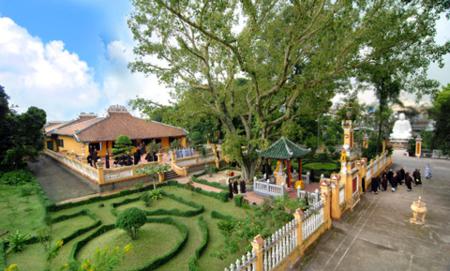Giac Lam Pagoda, formerly called the Cam Dem, was built in 1744. It is now standing as the oldest pagoda in Ho Chi Minh City, the first classic Buddhist training centre for Gia Dinh area and the South. In 1998, the pagoda was recognized as a national historical and cultural relic.
Giac Lam Pagoda, formerly called the Cam Dem, was built in 1744. It is now standing as the oldest pagoda in Ho Chi Minh City, the first classic Buddhist training centre for Gia Dinh area and the South. In 1998, the pagoda was recognized as a national historical and cultural relic.
Giac Lam Pagoda stands as a representative of the ancient pagodas in the South, and contains historical, cultural, architectural and religious sculptural values. It was constructed of various kinds of wood largely available in the region and located on the top of a hill under the shade of trees in a spherical design and close to nature. The two-tier gate, prominent in the garden-pagoda architect, was placed right on the lane leading to the yard of the pagoda. It harmonises with Western decorations of square pillars, and Indian and Khmer cultures of lions, lotuses, and Nagar snakes. However, the Vietnamese national culture is the strongest felt with a terra cotta vase made in Song Be and placed in the highest position in the pagoda. Every year, on the New Year Eve – the point of time when the sky meets the earth – the residential monk would stick the scroll with wishes for a peaceful world and happy life for people on the “magic heaven supporting pillar”. This is an expression of the harmony between religion and life.
The ancient statues in Giac Lam Pagoda mark the first immigration of the Viet to the new land. Among the 118 statues at the pagoda, 113 were made of bronze and wood. The Arhat statues bear strong influence from the Chinese sculpture, which was eased from the statues made in the early part of the 19th century with Arhats bearing more characteristics of southern Vietnamese: round and happy faces, and heavy statures, in costumes different from Chinese ones.
Various decorations of Giac Lam Pagoda become special with sophisticated designs carved on wood. The nine dragons, carved hidden in clouds and spraying water in a manifestation of blessing to the agriculture-based area, breathe the warm life to the holy atmosphere of the pagoda.
Source: Vietnam.vnanet

